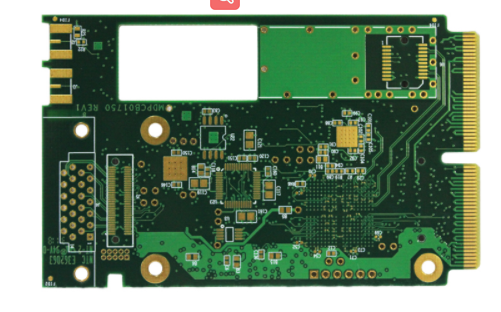PCB circuit board welding knowledge
1. The principle of PCB circuit board soldering is a process in which solid solder wire is heated and melted by a heated soldering iron, and then flows into the metal to be soldered with the help of flux to form a firm solder joint after cooling. When the solder is a tin-lead alloy and the soldering surface is copper, the solder first wets the soldering surface. With the wetting phenomenon, the solder gradually diffuses into the metal copper, forming an adhesion layer on the contact surface of the solder and the metal copper, so that both Combine firmly.
2. The main functions of the flux include: removing oxides on the metal surface, removing impurities and dirt on the metal surface, and preventing the metal surface from being oxidized again. The role of solder resist is mainly used to prevent continuous soldering between component pins.
3. Good solder joints should meet the following standards: the solder joints are in an inner arc; the solder joints should be round, smooth and shiny. Clean without tin thorns, pinholes, voids, dirt, rosin stains. It should be ensured that the welding is firm and there is no looseness.

There are three reasons for the welding defects of PCB circuit board:
1. The solderability of PCB circuit board holes affects soldering quality
The solderability of the circuit board hole is not good, it will produce virtual soldering defects, which will affect the parameters of the components in the circuit, resulting in unstable conduction of the multi-layer board components and the inner line, causing the entire circuit to fail. The so-called solderability is the property that the metal surface is wetted by molten solder, that is, a relatively uniform continuous smooth adhesion film is formed on the metal surface where the solder is located.
The main factors that affect the solderability of printed circuit boards are:
1. The soldering temperature of the PCB circuit board and the cleanliness of the metal plate surface will also affect the solderability. If the temperature is too high, the solder diffusion speed will increase. At this time, it will have a high activity, which will cause the circuit board and the molten surface of the solder to oxidize rapidly, resulting in soldering defects. The contamination of the PCB circuit board surface will also affect the solderability and cause defects. Defects include solder balls, solder balls, open circuits, and poor gloss.
2. The composition of the solder and the nature of the solder. Solder is an important part of the welding chemical treatment process. It is composed of chemical materials containing flux. Commonly used low melting point eutectic metals are Sn-Pb or Sn-Pb-Ag. The impurity content must be controlled by a certain proportion, In order to prevent the oxides generated by impurities from being dissolved by the flux. The function of the flux is to help the solder wetting the circuit surface of the soldered board by transferring heat and removing rust. White rosin and isopropanol solvents are generally used.
2, welding defects caused by warpage
PCB circuit boards and components are warped during the welding process, and defects such as virtual welding and short-circuit due to stress deformation. Warpage is often caused by the temperature imbalance of the upper and lower parts of the circuit board. For large circuit boards, warping will also occur due to the drop of the board's own weight. Ordinary PBGA devices are about 0.5mm away from the printed circuit board. If the components on the PCB circuit board are large, the solder joints will be under stress for a long time as the circuit board cools down, and the solder joints will be under stress for a long time. It is enough if the device is raised by 0.1mm Lead to open solder joints.
3, the design of the circuit board affects the welding quality
In the layout, when the PCB circuit board size is too large, although the soldering is easier to control, the printed lines are long, the impedance increases, the anti-noise ability is reduced, and the cost increases; The lines interfere with each other, such as the electromagnetic interference of the circuit board. Therefore, the PCB board design must be optimized:
1. Shorten the wiring between high-frequency components and reduce EMI interference.
2. Components with heavy weight (such as more than 20g) should be fixed with brackets and then welded.
3. The heat dissipation problem should be considered for heating elements, to prevent defects and rework caused by large ΔT on the surface of the element, and the thermal element should be far away from the heat source.
4. The arrangement of the components is as parallel as possible, so that it is not only beautiful but also easy to weld, and it is suitable for mass production. The PCB circuit board is best designed as a 4:3 rectangle. Do not change the wire width to avoid wiring discontinuities. When the circuit board is heated for a long time, the copper foil is easy to expand and fall off. Therefore, avoid using large-area copper foil.